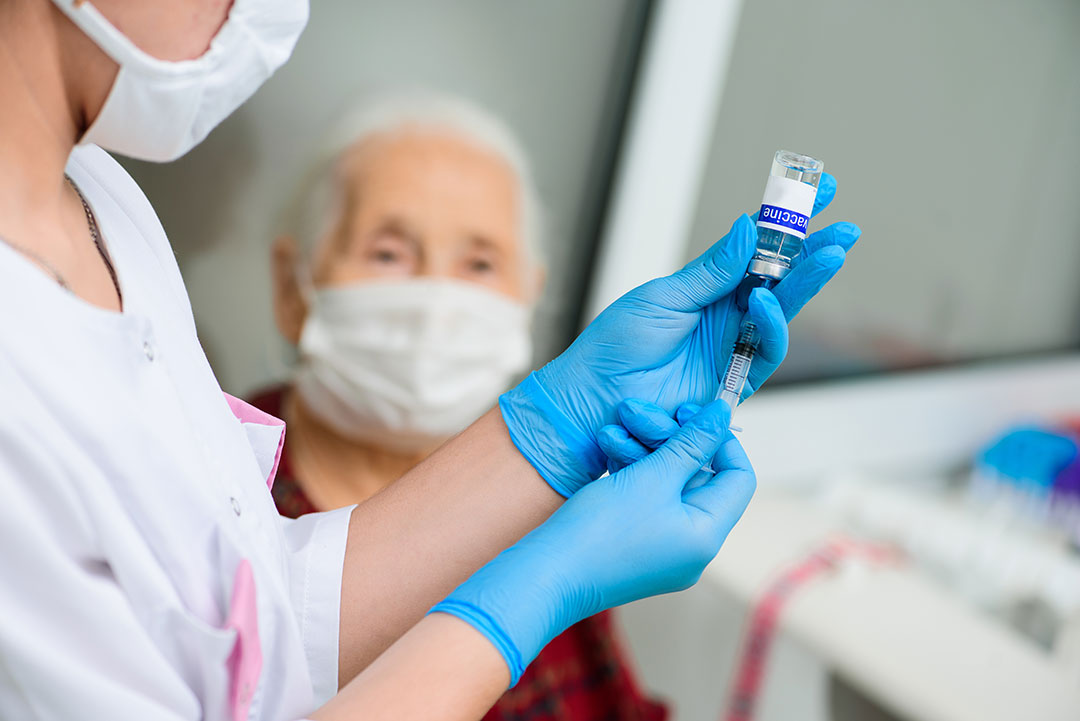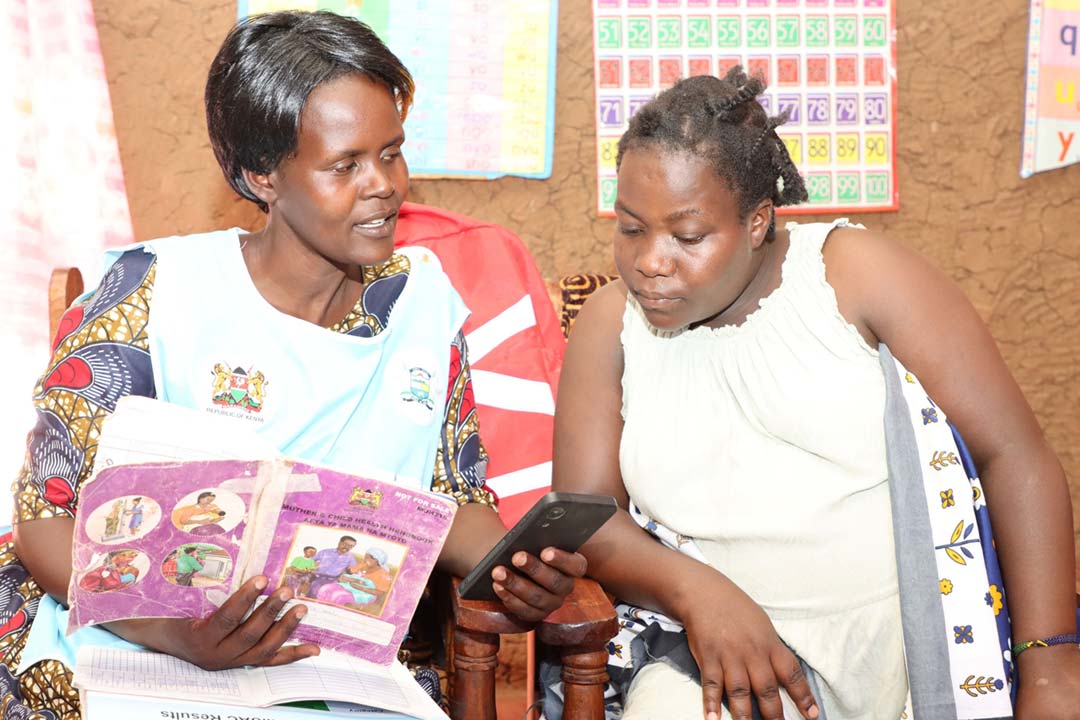Three things that need to be included in the new Pandemic Accord
This week negotiations are taking place on a historic Pandemic Accord to deal with future pandemics. Gavi’s Anamaria Bejar and Thiago Luchesi set out three vital points that are currently missing in the draft Accord.
- 20 July 2023
- 5 min read
- by Anamaria Bejar , Thiago Luchesi

In May 2023, the World Health Organization (WHO) announced the official ending of the COVID-19 pandemic as a Public Health Emergency of International Concern. The pandemic saw significant challenges in ensuring equitable access to vaccines for countries around the world, alongside major disruptions to essential health services, such as routine immunisation.
While global vaccination rates are slowly recovering, the number of zero-dose children – those who have never received a single vaccine – grew from 13 million in 2019 to 18 million in 2021. Although encouraging recovery in coverage of basic vaccines has been seen in many Gavi countries, many have yet to recover to pre-pandemic levels.1, 2
These suggestions are oriented towards addressing equity concerns and ensuring no one is left behind in the way the world deals with major health threats in the future.
As a result, there has been growing momentum to strengthen the international legal landscape of global health to close these gaps and ensure countries are able to jointly prevent, prepare for and respond to future pandemics in an equitable, inclusive, and coordinated fashion. The Pandemic Accord is one of such initiatives that is intended to improve pandemic prevention, preparedness, and response.
Led by an intergovernmental negotiating body hosted by the WHO, member states and relevant stakeholders are negotiating a Pandemic Accord to deal with future pandemics.
The Intergovernmental Negotiating Body released the bureau's text version of the proposed Pandemic Accord last month, incorporating more than 200 pages of comments and recommendations from member states. This includes positive changes such as recognition that 20% of pandemic-related products being equitably shared would be a minimum figure to address equity challenges identified during the COVID-19 pandemic, as well as expanded provisions to protect lower income countries from bearing potential liability and compensation in the event of unexpected serious adverse events arising from the manufacture, storage, transportation and administration of pandemic vaccines.
However, the new bureau draft removed critical components to improve the global health architecture and has not addressed some key concerns identified by counties and partners in the previous round of negotiations. For instance, the text does not yet address the need for at-risk contingency financing that would assist in rapid responses, nor does it articulate the importance of meaningful and inclusive international partnerships including the role of specialised agencies with technical expertise in supporting countries' efforts to prevent, prepare for and respond to future pandemics.
Similarly, with the exclusion of the preamble in the bureau draft, universal health coverage, a foundational component of strong pandemic prevention, preparedness and response, was largely removed from the text.
Have you read?
As the sixth meeting of the Intergovernmental Negotiating Body is being held this week in Geneva (17-21 July 2023), we offer the following considerations for member states participating in the negotiations to improve the bureau's text. These suggestions are oriented towards addressing equity concerns and ensuring no one is left behind in the way the world deals with major health threats in the future.
1. Immunisation must be included throughout the Accord.
Immunisation programmes – as a core part of primary health care services and a key component of universal health coverage – have some of the greatest reach and demonstratable health outcomes. Routine immunisation provides a useful platform to prevent outbreaks before they become pandemics and builds pathways to hard-to-reach communities. Immunisation can serve as the entry point for rapidly scaled up responses. Many of the vaccines administered as part of the COVID-19 response used the infrastructure supported by routine immunisation programmes, and to exclude it from the Accord would be an oversight.
2. At-risk contingency financing, available on day zero of a pandemic to support surge capacity for a coordinated global response, must be included in the Accord. This is a key lesson from the COVID-19 pandemic response.
The COVID-19 pandemic demonstrated that contingent funding needs to be in place at the outset, and available throughout the response to ensure that a global response is possible as soon as the crisis strikes. Financing for surge capacity to pivot and readily invest in new solutions as needed is essential to avoid catastrophic failures in a future pandemic.
3. The power of international partnerships should be more explicitly included in the Accord.
The global response to the COVID-19 pandemic has left us important lessons about how international partnerships should be more inclusive of local, national, and regional actors for a coordinated and effective pandemic response. Stronger collaboration with governments, civil society and the private sector can be a game changer in pandemic prevention, preparedness and response. The Accord should also include the role of specialised agencies – such as Gavi, the Coalition for Epidemic Preparedness Innovations (CEPI), and the Global Fund against Tuberculosis, Malaria and HIV/AIDS, among others which have solid technical expertise in supporting countries on the end-to-end vaccines, therapeutics and diagnostics supply chains, and they should be named as key partners.
Expectations are high for the Pandemic Accord and on member states to use the lessons learned from COVID-19 to prepare for and respond to pandemics. We must not lose sight of the significant gaps identified during the COVID-19 pandemic to build a better global health architecture for the future.
All member states coming together behind strengthening health systems and particularly primary health care, at-risk contingency funding available from day zero of a pandemic, and a truly inclusive partnership approach that outlines the role of specialised agencies, can be transformational for preventing, preparing for, and responding to future outbreaks and pandemics.
We look forward to seeing these components incorporated into the Pandemic Accord language.
1. https://www.gavi.org/vaccineswork/eight-things-you-need-know-about-state-global-immunisation
2. https://cdn.who.int/media/docs/default-source/immunization/wuenic-progress-and-challenges.pdf, percentage calculated from 13 million zero-dose children in 2019 to 18 million zero-dose children in 2021.
More from Anamaria Bejar
Recommended for you








